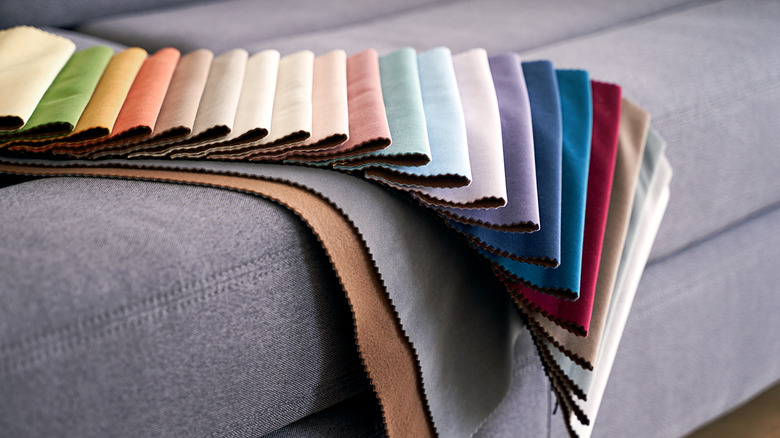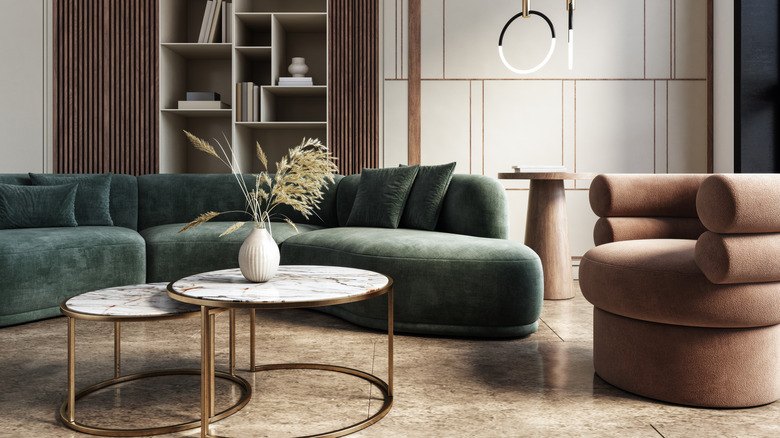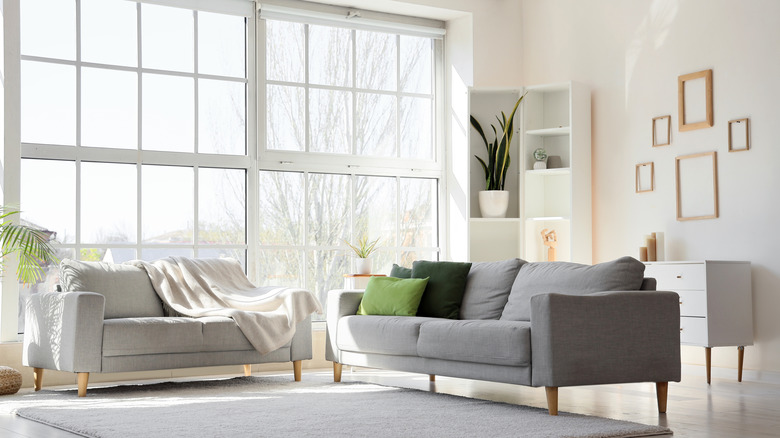These Trendy Alternatives To Dated Gray Furniture Are Gaining Popularity In 2025
All-neutral spaces have been very popular in the past two decades, with many rooms exquisitely layering textures and materials with only subtle shade differences in tried and true neutrals like white, cream, beige, and tan. The other popular and commonly sighted neutral is gray, which manifests in shades from softer pale dove to deep charcoal. A common color for upholstered furniture due to its easy adaptability to various aesthetics and design schemes, gray typically offers greater depth than white and is far easier to keep clean than lighter shades like white. The fashionability of gray furniture may be on the outs for 2025 trends, however, with many alternative shades like green and brown gaining popularity among upholstered pieces.
With ubiquitous grays becoming a thing of the past, new popular colors in upholstery are often warmer and less severe. Often called millennial gray, gray furniture can read as too sterile and monochrome compared to richer, more layered palettes. The shift away from what some call a tired furniture trend may be evidence of a move toward more color in spaces in general, particularly among aesthetics like grandmillenial style and maximalist spaces, which incorporate more color and pattern.
Alternative colors to gray furniture
While gray furniture reigned, along with gray walls and grey-toned wood floors, in recent years, these new shades offer more richness and depth. New neutrals like olive green or deep and moody blues, like midnight blue and navy, are appearing on upholstered pieces more frequently, as are nature-inspired colors like terra cotta and dark brown. While offering some of the same adaptability, these colors are warmer and less sterile than grays, meaning they can be included in just as many aesthetics depending on the shape and style of the piece. For lighter options that are great alternatives to gray, consider furniture in shades of mauve, taupe, or sage green.
If you love a cooler-toned look with the same vibe as gray, slate and watery-sea-washed blues can be a better, more interesting alternative to plain gray. Combine a beautiful slate blue with rich wood tones, or add accent colors like reds and oranges to create contrast and depth. Use these new shades together, or pick your favorite and add elements in various levels of depth to get a monochrome look that is more dynamic and varied.
How to put a fresh spin on gray
While many are getting rid of millennial gray, there are still many fans of the classic neutral. If you love the look of gray furniture or have current gray furnishings you adore and don't want to reupholster or slipcover them, there are ways to add a little more of a fresh look. To add interest, use the gray as a base and add cushions in one of the shades above, like deep olive or dark brown, to create a nature-inspired, cozier space. Or use earth tones like cocoa, taupe, and gold to add instant warmth to gray.
You can also lean into the gray and add more shades of it in different levels of depth, from the palest, almost-white grays to deep charcoals that border on black. Determine whether your current pieces are warmer, with brown undertones, or cooler, with blue tones, and use those to their best advantage when choosing other furnishings and accents. Warmer pieces compliment rustic farmhouse and boho spaces; white, more steely blue grays are more favored by industrial or modern interiors. Your lighting choices can also influence gray's qualities.


